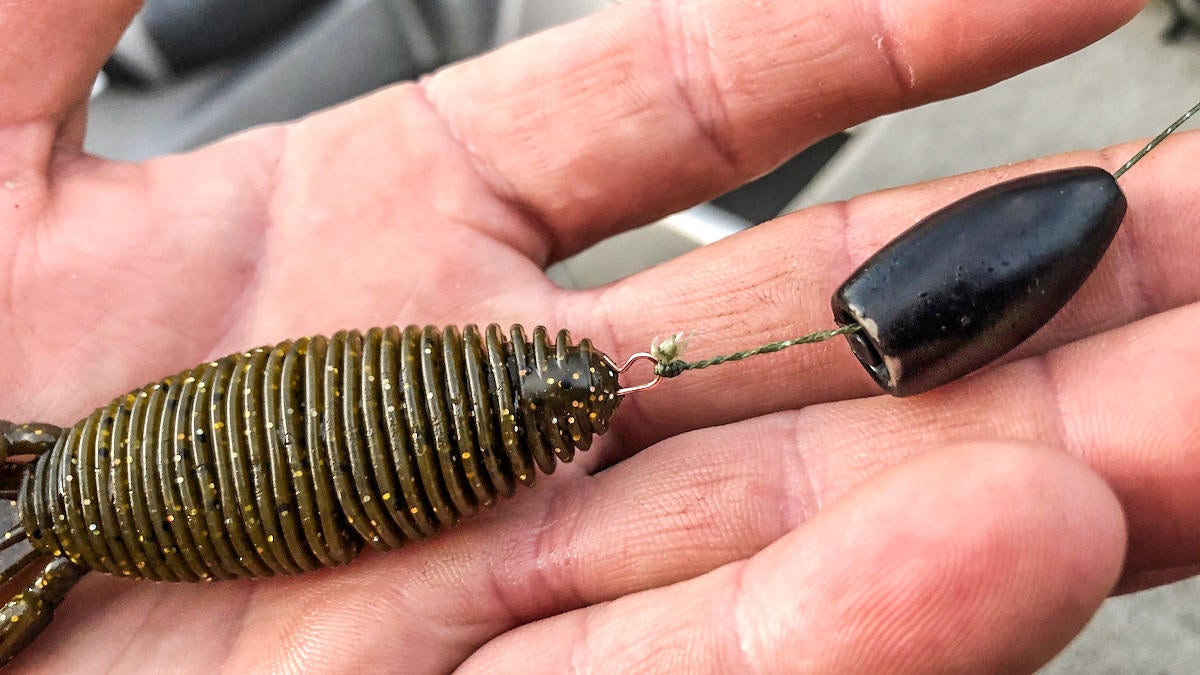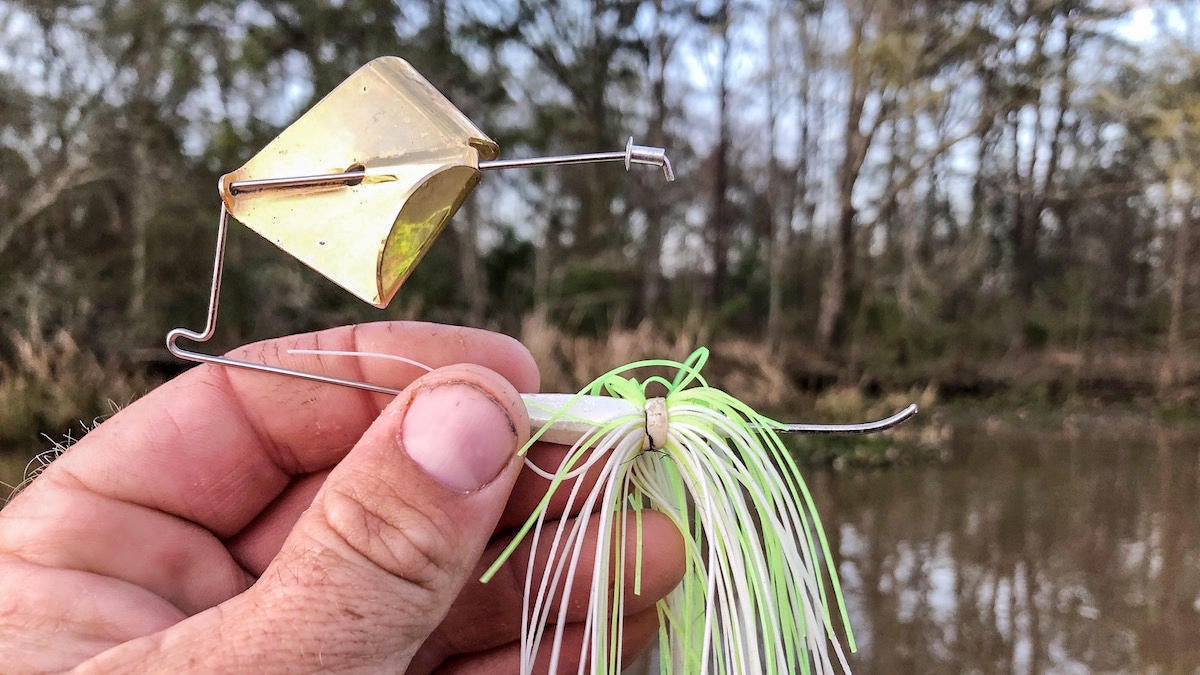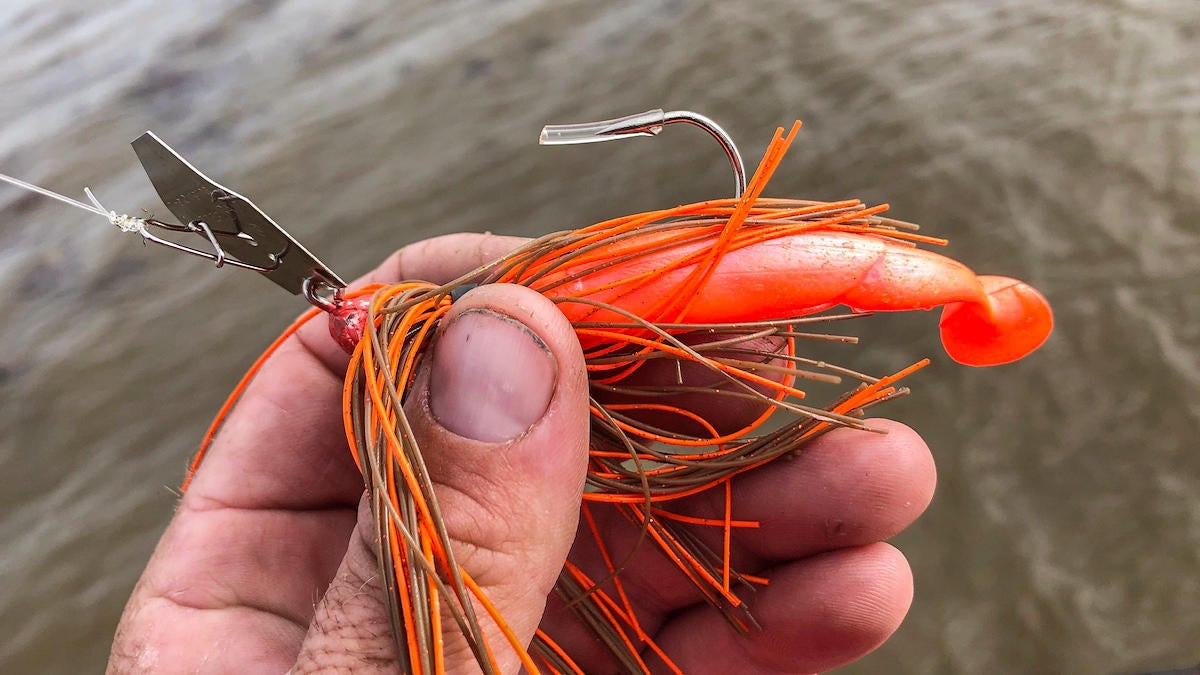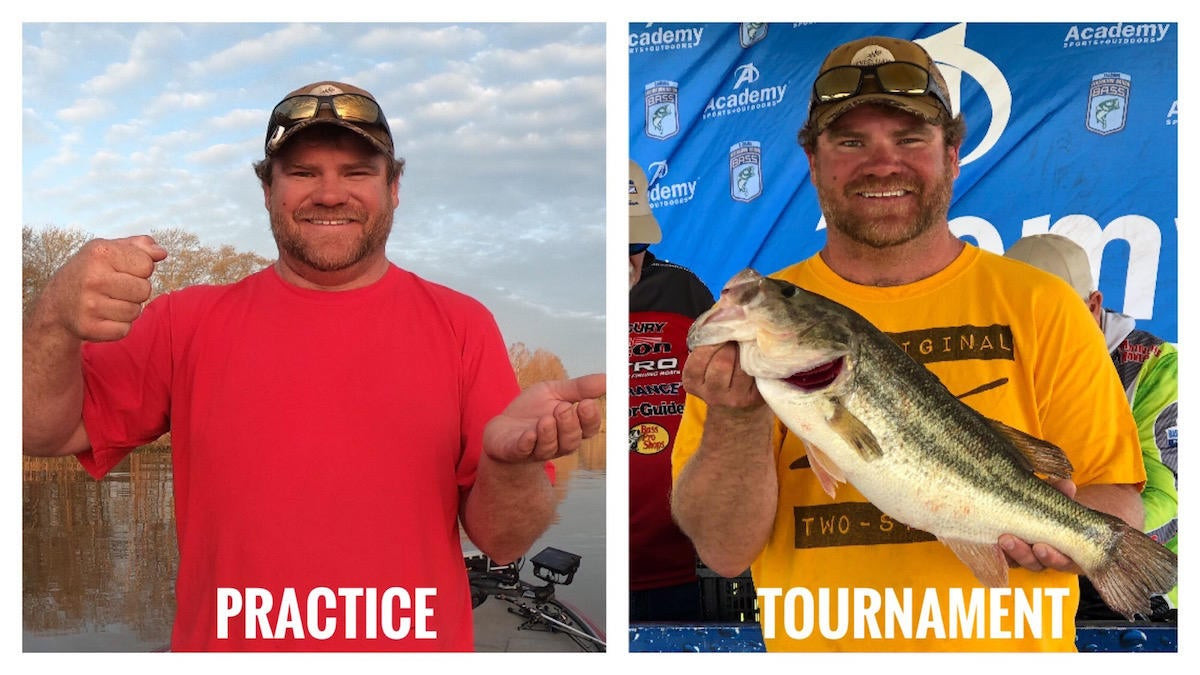One of the biggest eye-roll moments in fishing happens when a guy goes up on stage or parades around the parking lot talking about the 20-pound limit he had… yesterday. That’s as useless a claim as there is. Not to say I haven’t been guilty of making it a time or two myself. Most of us have. But it’s still useless.
So how do you remedy that? How do you still go out and practice and get bites, but not waste catches? Well, here are three simple tricks that you can use to ensure you won’t accidentally hook a fish on any type of bait.
Tru-Turn HitchHikers
HitchHikers and other screw lock-type components are typically used to either connect the nose of a soft-plastic bait to the eye of a hook or to add something to a soft-plastic bait elsewhere, like a tail spinner to a Senko the way a Humdinger does.
But a HitchHiker is also a great tool to use with most soft-plastic baits you want to fish in practice. Whether you’re punching mats, dragging a Texas rig or burning a soft-plastic swimbait, tying a HitchHiker directly to your line alleviates the need for a hook at all. You may lose a few baits throughout the day, but you won’t suffer the gut-wrenching regret of sticking a 5-pounder.
It’s worth noting that some baits don’t perform as well with just a HitchHiker like they do with a hook. The added weight of a hook and the way you can manipulate a bait’s form with a hook are critical to the way a Fluke swims and a Ribbit rises out of the water. So in those two instances and a few others, I’ll typically still use a hook in practice but I’ll bury the hook point deep inside the bait.
On the other hand, using a HitchHiker and no hook while punching in practice works extremely well. You’ll find that the bait falls cleanly through mats far more often without the weight having to drag a hook through.
Cutting hooks
This is a simple one that anyone can do and a great reason to keep old baits. Inevitably, I’ll get snagged. And inevitably, after having done so 4 or 5 of 10,000 times in a day, I’ll get a little frustrated and finally snatch the bait undone or hold my thumb on the spool and troll off with enough force to pry Thor’s hammer off the floor. They don’t make a hook capable of withstanding that. Not for bass fishing anyway.
So after my tantrum, I take the swim jig or buzzbait or spinnerbait or what have you and toss it into a box in my boat. Now, when it comes practice time, I have a selection of baits with opened up hooks that I can tie on. They just need a little more modification. When cutting the business end of the hook off, I like to leave just a little of the bend to help keep my trailer up on the bait.
You can do this with treble hooks too on crankbaits, topwaters, lipless cranks and the whole lot really. And you’re typically better off not cutting the whole hook off at the eye. Continue to cut even the treble hooks in the bends. The reason being balance. A lot of crankbaits, especially small ones, depend on the weight and drag of their hooks for their action. So if you cut the hooks off completely, you’ll throw that action off.
Cover the hooks
I keep a roll of small spacer tubing in my boat that dad found once upon a time on Jann’s Netcraft, a site where you can buy components to build nearly anything for fishing. We use little pieces of the tubing to keep our trailer hooks on spinnerbaits, buzzbaits and ChatterBaits.
But you can also use this tubing, or something like it, to cover the hook point and barb of a anything from a swim jig to a popping frog. This keeps you from having to cut hooks off of baits, especially when you don’t have any old ones and don’t want to sacrifice a good one.
You want to make sure that you slide a large enough section over the point of the hook that you can catch the barb as well. Once the tubing passes the bard, there’s no pulling it off. You’ll have to take a pair of scissors and cut it off when the time comes. And you definitely want to remember to do that before derby day.
Depending on the cover I’m fishing around, I like to leave a little under a 1/4-inch of excess tubing past the point of the hook. If you’re in thick vegetation, you may want to trim it a bit further as the tubing will catch the grass at times. And, be sure to not set the hook, which is obvious I know but hard to remember when a 5-pounder blasts a frog. This stuff will keep a fish from hooking itself most of the time, but it won’t hold up to you putting the wood to them.
In summary
So there you go. You have no more excuses now and neither does your buddy. The next time he comes up to you in the parking lot talking that trash about what he had yesterday, just send him this article and smile. Whether you choose a HitchHiker, to cut your hooks off or to cover them, there’s no reason you can’t NOT catch fish too.
















